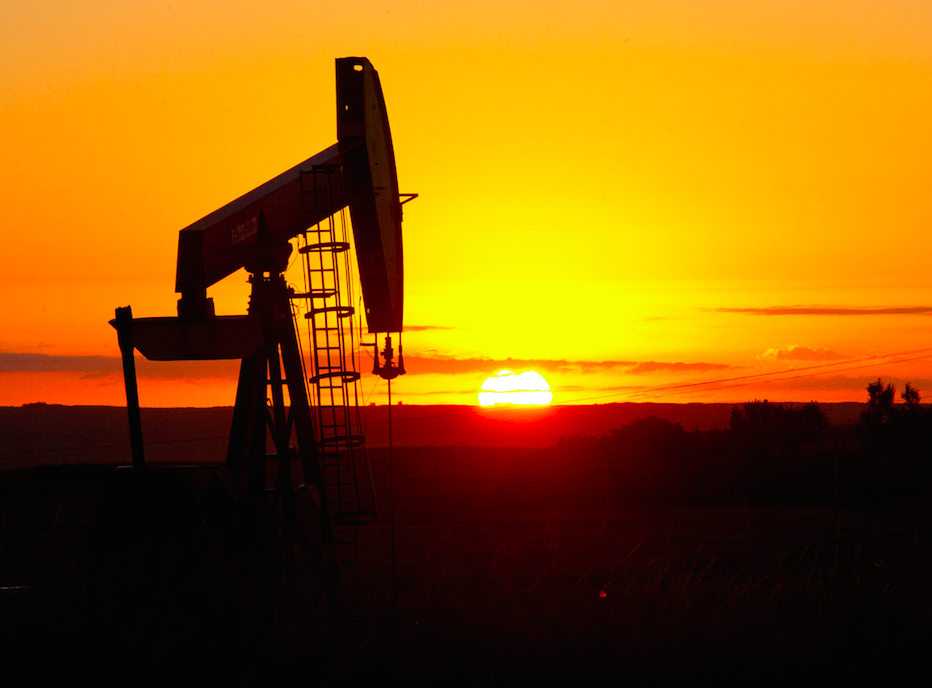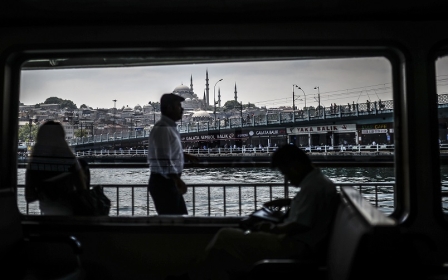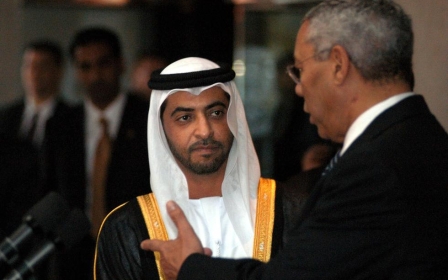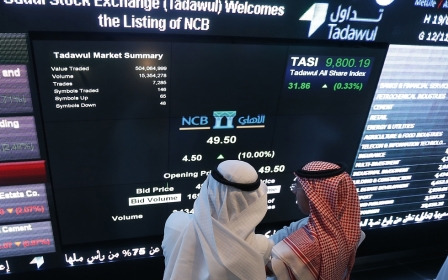ANALYSIS: Gulf energy producers look warily at China market wobbles

What a difference 40 years makes. When OPEC pushed up oil prices in the mid 1970s, it is extremely doubtful if the word “China” was mentioned even in passing at meetings of either the oil cartel or the Western governments wrestling with the consequences.
Today, concern about the slowing of Chinese growth has panicked Middle East and Western stock markets and led to renewed falls in oil prices that have already dropped to levels not seen since the height of the most recent economic crash.
This has posed extremely complex policy dilemmas for Middle East oil producers, who are acutely aware that any moves they make to boost the oil price will have significant implications for their global investment portfolios.
Today China is undoubtedly the first item on the agenda of governmental and OPEC meetings.
For the latest falls in oil prices have made a nonsense of the 2015 budgets of the Middle East oil producers. Normally their finance ministries make a conservative assessment of the oil price and consequently oil revenue; in most years the average price is higher than budgeted, making them look optimistic.
The 2015 budgets did take account of the near halving in the last year of oil prices which had remained broadly stable at $110 a barrel between 2010 and 2015. Economists reckon that Saudi Arabia’s 2015 budget was based on an average price of around $60 a barrel.
Indeed, in interviews last December after announcing the budget, Saudi Arabia’s Finance Minister Ibrahim al-Assaf discussed when the rebound in oil prices would happen, arguing that this would happen later this year or early next.
Following the China crisis, the mood has changed and talk is now of how far prices will fall, with some predicting a drop to $30 a barrel.
That will have major implications for all the oil-producing countries, whose budgets still rely heavily on revenue from this sector, despite their attempts to diversify into sectors such as tourism. In this context the $110 a barrel that prevailed until the middle of last year is critical.
That is right in the middle of the level needed by Middle East oil producers to maintain a budget surplus, according to research by Deutsche Bank and the IMF. Critically it is just above $104 a barrel needed by Saudi Arabia; and while this price is well short of the $184 and $131 required by Libya and Iran respectively, it is well above the levels needed by the UAE ($81), Kuwait ($78) and Qatar ($77).
Deficits are easily sustainable in the short term - Gulf countries have trillions of dollars in reserves and sovereign wealth funds, but they are not something any minister of finance could tolerate for too long. For example, Saudi Arabia has already spent almost $62bn of its foreign currency reserves this year, and borrowed $4bn from local banks in July - its first bond issue since 2007. And it is expected to issue $5bn more bonds later in the year.
And the kingdom’s finances are also being put under strain from the other side of the budget. Defence spending is up to pay for the war in Yemen and bombing the Islamic State group in Syria while King Salman has awarded generous bonuses to public sector workers after his accession to the throne in January.
Historically OPEC, and particularly its leading member Saudi Arabia, would have responded to the current mismatch of supply and demand by reducing production, which would have gradually brought the two more into balance and enabled prices to return to the levels seen until last summer.
Instead OPEC is continuing to pump oil. This keeps prices low – which brings the focus on the key producer Saudi Arabia which has always seen oil as a strategic commodity.
The Saudi government remains inscrutable on the subject, but that has not stopped the speculators. Some argue they are trying to punish oil-revenue-dependent Russia for its support of Bashar al-Assad or that the main target is Iran, which needs a higher oil price than Saudi Arabia to balance its books.
Others argue that the kingdom is manipulating the markets to try to quash competition, especially from new oil producers such as those involved with the Canadian oil sands and the shale production in the US. If prices go down, the argument goes, some may be forced out of business and others deterred from entering the market, enabling OPEC to maintain its dominance. The counter to this argument is that US companies have already started to reduce their costs, enabling them to break even at a lower price.
There is though another reason why Middle East oil producers are moving carefully at living with lower oil prices. The explanation may be that these countries are now such an integral part of the global economy that any action that might push the world nearer an economic downturn – which higher oil prices might – would do considerable damages to Middle East investments.
It was all so different in the 1970s. Then the West had little option but to pay the higher oil prices demanded by OPEC, whose members were largely immune to the economic price paid by consumers. Much of the revenue was recycled into financial instruments in the US and Europe, where high interest rates protected them from the impact of inflation and the petro-dollar further underpinned their earnings.
When international companies tried to sell into Arab markets, they found laws that insisted on them taking local partners; and the foundations of many wealthy business dynasties across the Gulf were laid when they received the profits from 51 per cent of a joint venture with a blue chip Western company for, in some cases, offering little more than access to a market.
Today, in contrast, governments, their wealth funds and private individuals have invested much of their wealth in businesses, property and industries across the globe; and where they have invested in the region, for example in tourism, hotels, office complexes and sporting events, profitability has depended on international companies and visitors.
Governments and sovereign wealth funds are run very secretively and there is a lot of guessing when it comes to assessing their wealth and investment strategies. But there is a general consensus that these funds total at least several trillion dollars – and they make the headlines when they are involved in a major commercial transaction.
Take one of the most recently established sovereign wealth funds, the Qatar Investment Authority, which has an estimated $2 trillion under management. It is known to invest in international markets (United States, Europe and Asia-Pacific) and within Qatar outside the energy sector.
Its holdings and those of its linked companies Qatar Holding and Qatari Diar include stakes in Barclays Bank and Volkswagen, Harrods, Sainsburys, the Canary Wharf Group, the Shard in London and Paris St Germain football club. It also has set up funds to invest in Malaysia and China.
Or look at the enormous international stakes held by companies such as Saudi’s Kingdom Holdings whose global investment portfolio includes banking and financial services, real estate, hotels, media, entertainment, the internet and other technology.
Or a more sector-specific Saudi company like Cristal Global which became one of the largest titanium dioxide companies in the world, largely through US acquisitions. Its success depends on both stable commodity prices but also the global economy – titanium dioxide is one of the key ingredients in white paint.
One sector which will be affected if the current uncertainty turns into a more serious downturn is property. This is increasingly attractive as more Middle Eastern investors seek to make their investment Islamically compliant. One estimate suggested that in the next decade Middle East investors were preparing to invest $180bn in global property markets.
And there are also implications for international investment in Gulf property – developers say that Chinese interest in buying property in Dubai has increased considerably as trade links between the two countries grow. Any downturn in China will have implications for this relationship.
A further link with the rest of the world’s economy comes with the growing desire of Arab stock markets to open up to international investors; Saudi Arabia recently put its toe in the water by allowing direct foreign investment for the first time and the ending of sanctions in Iran is expected to provide a significant boost to this market.
However, when global investors are nervous about developing markets, they are likely to act cautiously. This means that the integration of Saudi Arabia and Iran will be delayed until there is a more confident mood.
All this means that the state of the global economy matters to Middle East policy makers more than ever. The global crash in 2007 and 2008 provided a salutary lesson that no part of the world could be immune from the consequences of a global recession.
So, as they watch China twist in the wind, they are acting cautiously on oil prices, aware that a sharp increase in prices would damage confidence and might tip the world into a downturn whose consequences would damage them as much as the West.
Middle East Eye propose une couverture et une analyse indépendantes et incomparables du Moyen-Orient, de l’Afrique du Nord et d’autres régions du monde. Pour en savoir plus sur la reprise de ce contenu et les frais qui s’appliquent, veuillez remplir ce formulaire [en anglais]. Pour en savoir plus sur MEE, cliquez ici [en anglais].




